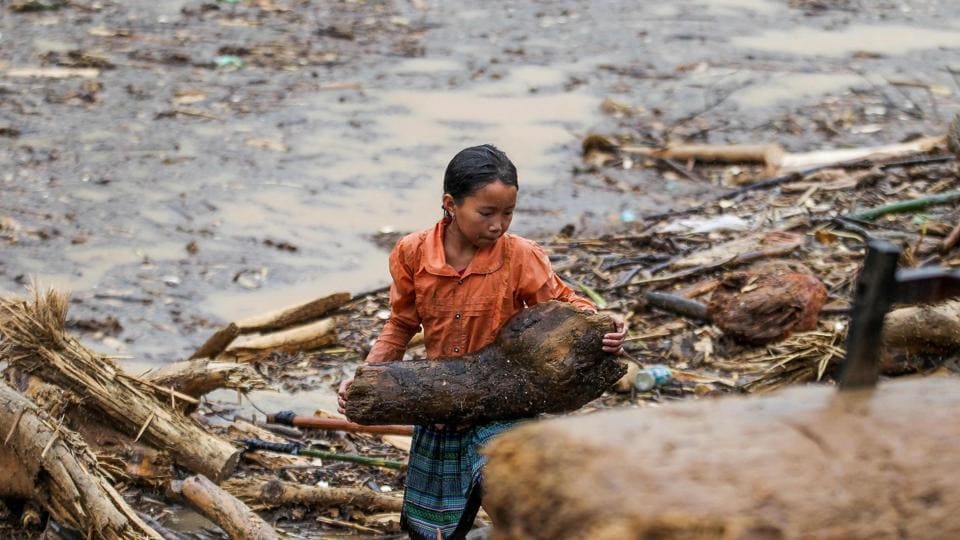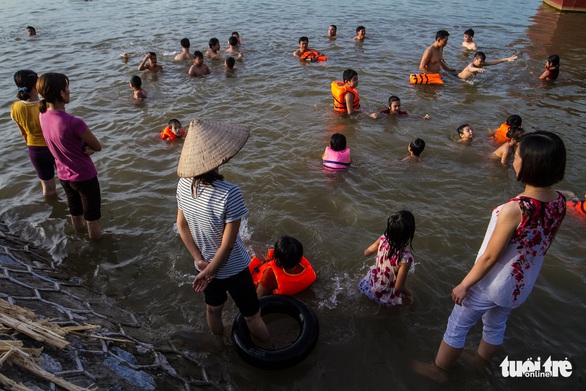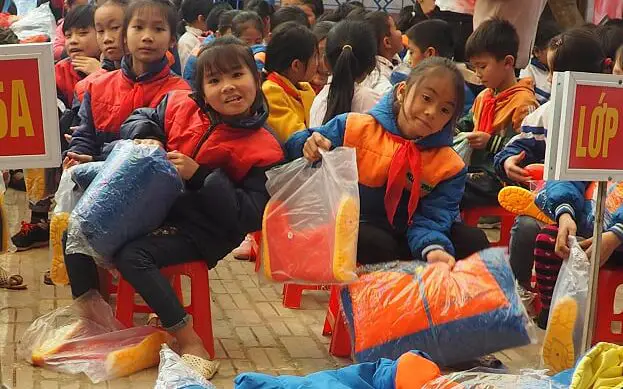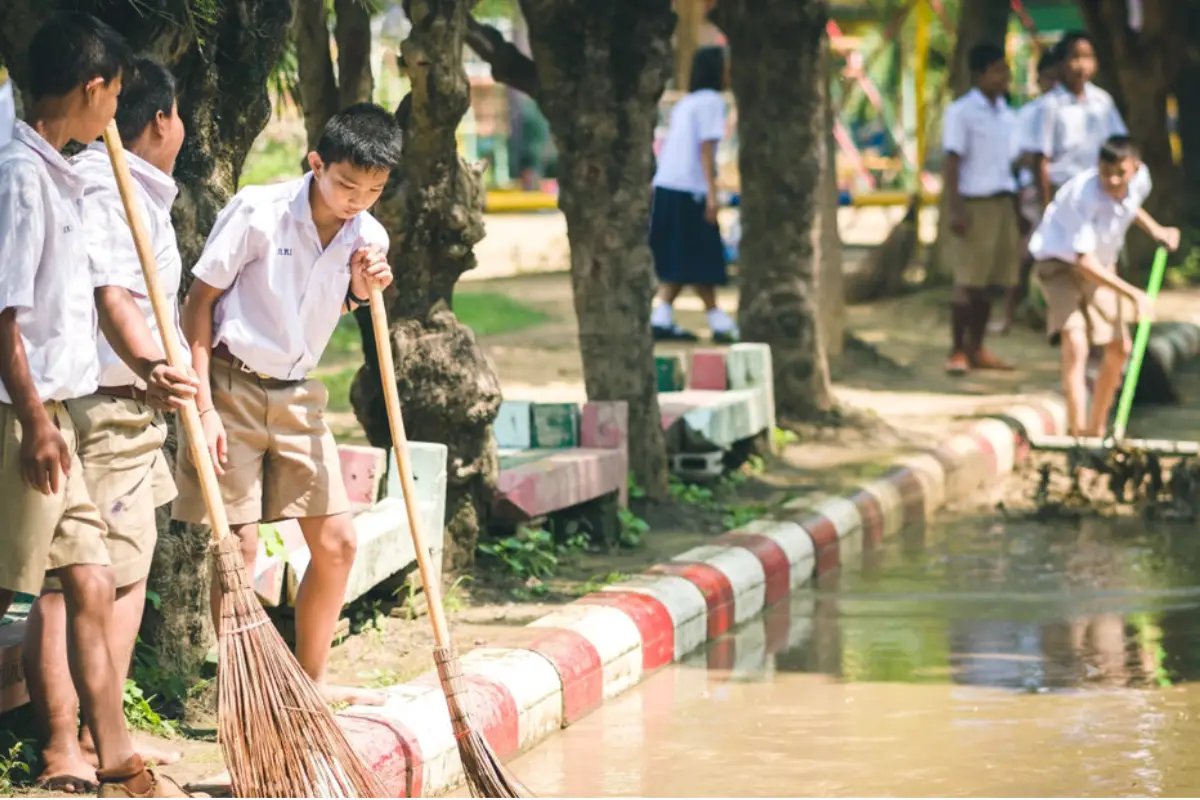Education is crucial to fight poverty, yet efforts by the government in ensuring youngsters access to adequate education have been jeopardized by the consequences of changing climate.
Climate change and global warming pose a threat to the safety of children – a group that is easily damaged by the dangers of unstable weather conditions. In fact, children, especially those living in impoverished states, have a higher risk of fatal injuries due to their slow adaptation to unexpected natural disasters such as flash floods or landslides.
Occurring more rapidly than those in the past, these disasters have destroyed many schools and facilities, harmed children in affected regions, and damaged citizens’ properties. All of these consequences negatively impact the lives of young residents: early school drop-out, exposure to poverty, and infecting detrimental diseases.
Without proper measures, the future generation will struggle to thrive in such a harsh situation.
How to limit the influences of climate change on children’s education? Let’s find out.
EARLY ADAPTATION TRAINING
Prevention is better than cure
Desiderius Erasmus
According to World Health Organization (WHO), “drowning is one of the top 5 causes of death for people aged 1–14 years for 48 of 85 countries, and there are an estimated 236 000 annual drowning deaths worldwide“. If global temperature rises, disasters will happen more severely in an unpredictable intensity, attacking areas liable to floods, tsunamis, and hurricanes.
However, extreme weather is not the only factor that threatens children’s lives and education. The lack of resilience and capability to withstand the effects of climate change is also one of the culprits.

Therefore, one practical solution is to equip youngsters with survival skills. To do so, training programs regarding adaptation to climate change should be implemented worldwide, focusing on improving children’s knowledge of this phenomenon and how to thrive in hazardous situations.
Teaching students fundamental swimming techniques is a responsibility that local authorities should execute as soon as possible. This will be a cornerstone in preventing unintentional drowning death and increasing children’s survival rate. Besides, students need to learn what they should do if sudden incidents occur, or how they can treat injuries with their first-aid abilities. By carrying out these programs, children will be more self-reliant and less susceptible to tough conditions.

AID FOR POOR CHILDREN
Many households, specifically those living in agricultural areas, have to migrate to refugee camps or different cities because disasters and climate change have ruined their home and vital living resources. This leads to an increasing number of poor families with insufficient food, clothes, and other basic necessities.
Poverty is one of the main reasons why many children cannot continue studying which is also why they lack the ability to thrive in extreme conditions. Because they are the most vulnerable groups to climate change, children should receive special supports from the government and communities.
Urgent aiding and emergency rescues need to be executed as quickly as possible in regions struck with natural disasters. Local authorities should increase subsidies and financial aid to poor regions to decrease poverty and help children who are in need.

Voluntary organizations also play a vital role in helping children who are affected by harsh weather conditions. For example, Project Sprouts is supporting children’s education in mountainous areas of Vietnam, where the poverty rate is high and families are susceptible to landslides, by providing school materials and clothes to help children during the difficult time of the years. Supports from the communities are always welcomed to enhance youngsters’ chances to go to school and have better lives.
At Project Sprouts, we realize that we can not solve all the problems relating to climate change. But we can seek to make a difference in the lives of needy children by giving them school supplies and encouraging them to continue their education; we can give them winter coats, boots, and blankets to help them stay warm during the cold winter months.
Project Sprouts would love to have you be a part of our community and help us to help worthy children in North Vietnam.
You can find out more about Project Sprouts by clicking here or go to our give now page to donate by clicking here. As we are a grassroots organization, all funds go to help those in need.
Related Content:
How Climate Change Weaken Children’s Education?
It is reported that the average temperatures will increase from 1ºC to 2ºC from now until 2050 which will lead to a rise in the number of natural disasters such as droughts, landslides, and sea-level risings. This will directly hinder many people’s lives, and children are among the most vulnerable group to experience environmental hazards.
Education is crucial for the future generation: it is the key to fighting poverty and helping global citizens to become self-reliant. However, global warming will continue to have unpleasant effects on children, in the long run, inhibiting them from accessing education.
You can read more by reading How Climate Change Weaken Children’s Education? by clicking here
3 Reasons Why Vietnamese Ethnic Minority Are Poor
According to the World Bank’s statistics, the poverty rate in Vietnam has declined dramatically from around 70 percent to below 6 percent since 2002.
However, the unsolvable issue with poverty in Vietnam is that more than 70% of the impoverished population comes from Ethnic minorities (measured using Vietnam’s poverty line). Despite several solutions and policies, Ethnic poverty is strongly persistent in Vietnam: poor children have to leave school, adults struggle to be employed.
Why Is This The Case? What are the causes of Ethnic Poverty?
You can read more by reading by 3 Reasons Why Vietnamese Ethnic Minority Are Poor by clicking here

